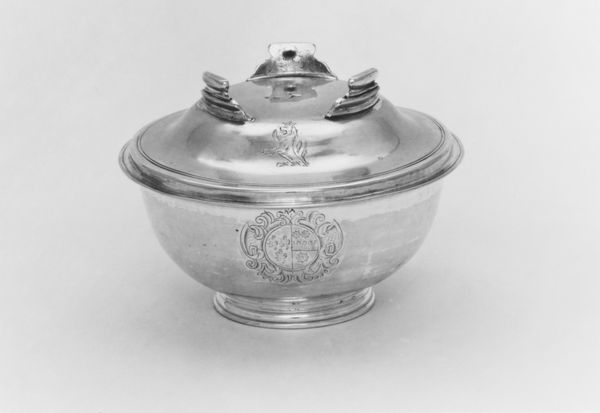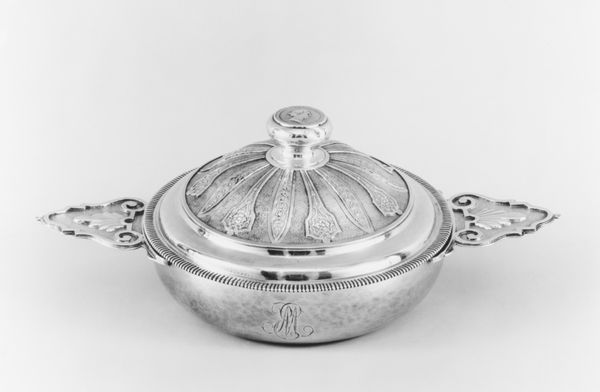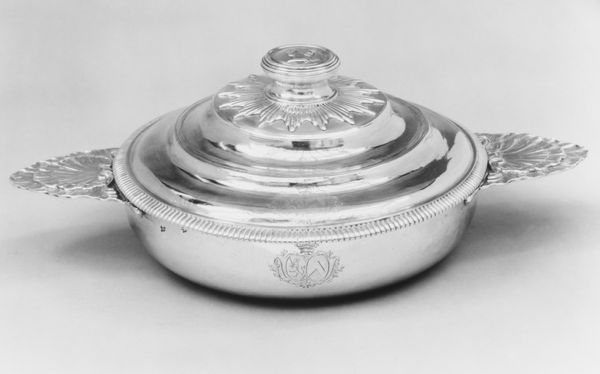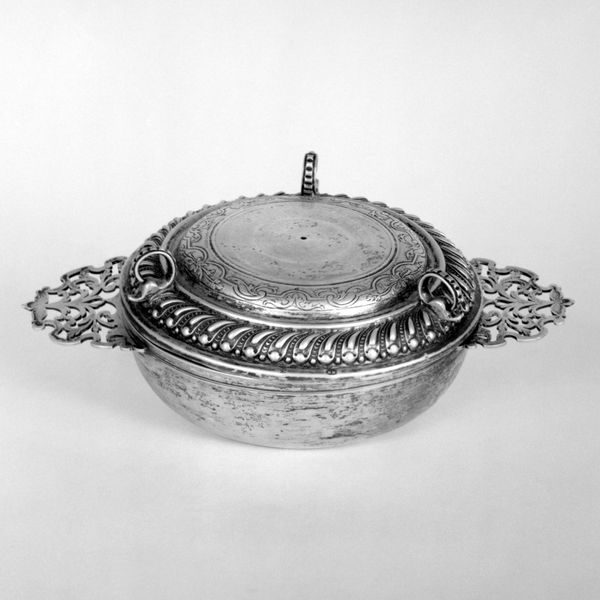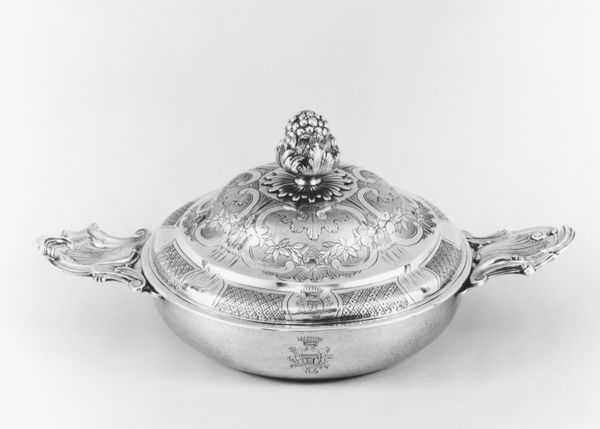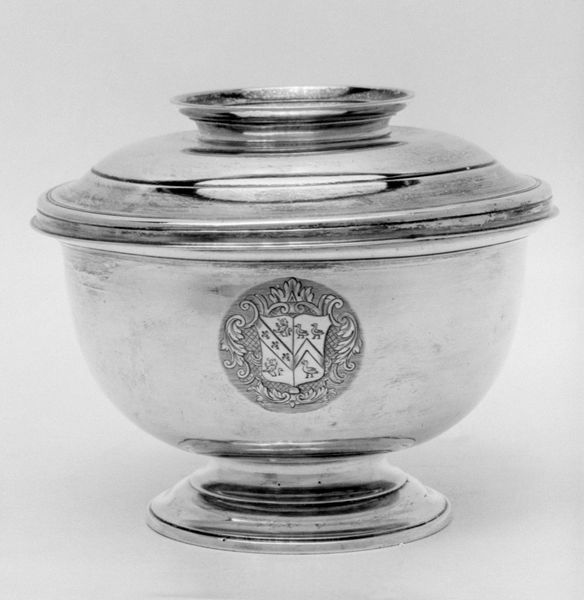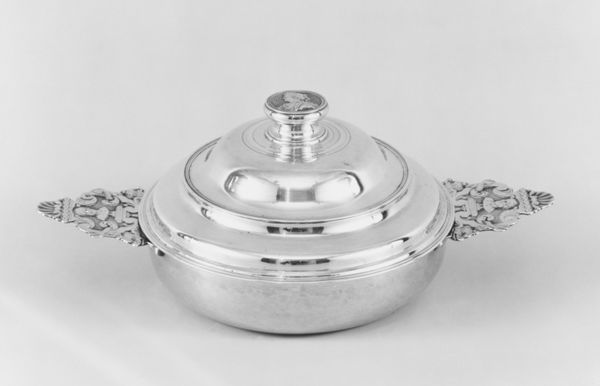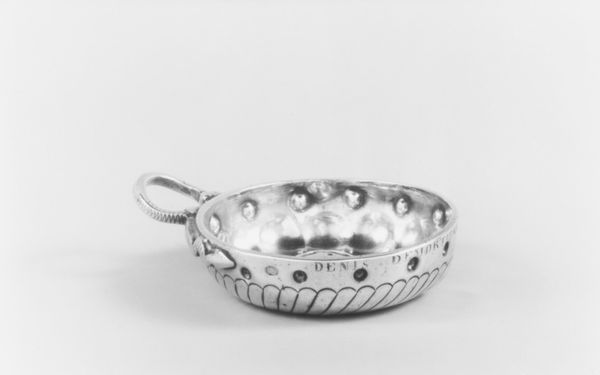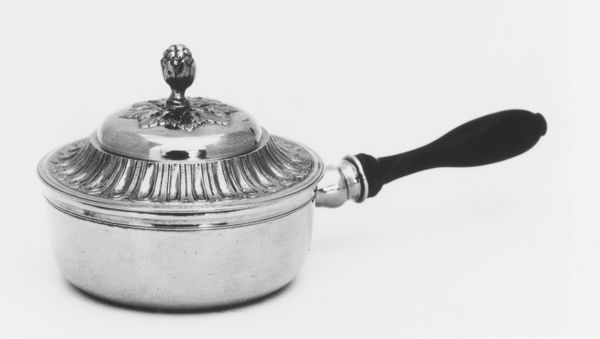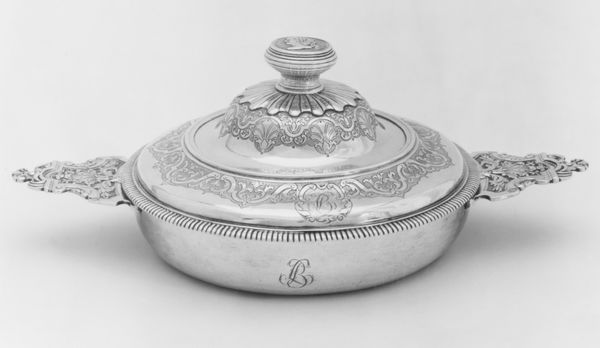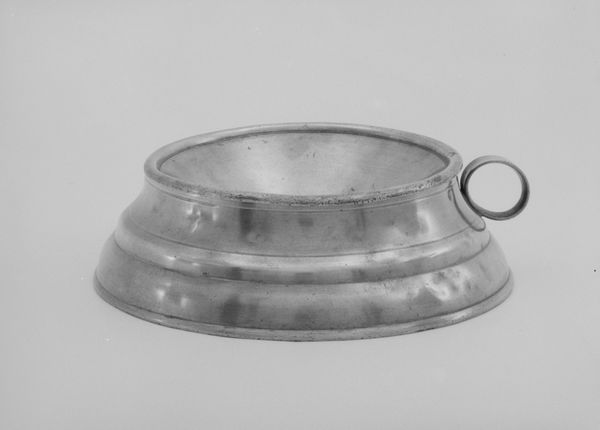
silver, metal, sculpture
#
medieval
#
silver
#
baroque
#
metal
#
sculpture
#
decorative-art
Dimensions: Overall: 2 3/4 × 6 3/4 × 10 7/8 in. (7 × 17.1 × 27.6 cm)
Copyright: Public Domain
Curator: Here we have an exquisitely crafted piece, a silver bowl with a cover, referred to as an ‘Écuelle,’ dating back to the early 18th century, between 1700 and 1725. It's attributed to Nicolas II Fauveau the Elder, and you can find it at the Metropolitan Museum of Art. Editor: The stark silver really jumps out. It feels so cool, restrained. The hammered texture of the bowl is lovely. It hints at handcraftsmanship, which, given the likely context, seems… interesting. Curator: Exactly. These écuelles were not mere utilitarian objects, but potent symbols of status and social power, particularly within aristocratic dining culture of the Baroque era. Imagine the political and social dynamics that would play out over a shared bowl. Editor: Definitely, objects like this can't be divorced from their political landscape. Considering the period, it embodies the height of royal extravagance and privilege. The ornamentation, even as subtle as it is, reflects the social hierarchies of the time. This bowl, intended for something as fundamental as food, becomes a tool to visualize how much better someone's life must have been based on class. Curator: Precisely. Think of the access this piece granted – access to power, to the court, to the elite. Even the act of sharing food from it signified inclusion, belonging to a very select circle. Furthermore, it visualizes, in silver, labor exploitation and vast economic disparity. Editor: The handles offer a glimpse of the Baroque style. Did the silver's reflective surface further highlight that power, literally mirroring the elite back at themselves? Curator: Undoubtedly. Silver, in its gleam, speaks of wealth, sophistication, and access, so its reflective properties reinforced the visual rhetoric of power. Its value was, and still is, symbolic. Editor: Seeing something so intimately linked to displays of status encourages a deeper exploration of the politics embedded within decorative art. It reminds us that even the most beautiful object can have loaded meanings, especially surrounding issues like consumption, labor, and class. Curator: I agree. This ‘Écuelle’ encourages us to consider what seemingly decorative art truly communicates.
Comments
No comments
Be the first to comment and join the conversation on the ultimate creative platform.

